Hi everyone, and welcome back to the Mirror Gallery. This week we are going to look at yet another medium, and it’s one I am quite fond of collecting. So far we have looked very closely at a sketch, as well as explored the final painting as it appeared on the card. But is there anything that comes in between? The answer is yes: a color study.
Over the last six months I have had the opportunity to pick up a handful of color studies from Ryan Pancoast, and today we will look at two of those: Lambholt Pacifist and Lambholt Butcher from Shadows over Innistrad.
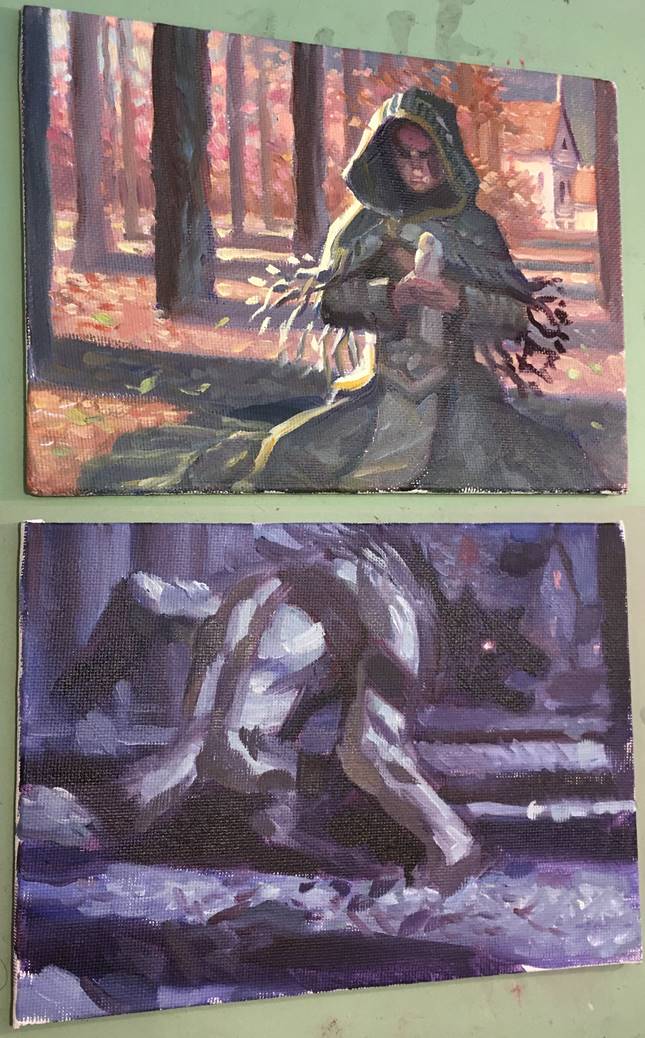
Lambholt Pacifist & Lambholt Butcher, oil on canvas board, each 5” x 7”
I was fortunate to be able to ask Ryan a few questions about these two pieces, so some interview questions and artist insights will be sprinkled throughout this article. Before we get too deep into the usual course of study looking at artist and work, let’s find out from the artist himself exactly what a color study is and why they exist.
What is a Color Study?
Similar to sketches, color studies can function as different things to different artists. Some artists create them traditionally, some digitally, and others as part of another step. I asked Ryan if he could describe what a color study was to him in his own words, and explain a bit about where it fell into place in his artistic process.
RP: A color study is an important part of the process in many cases. After the rough pencil sketch, it’s useful to plan the color of the piece and try to create some harmony between the colors so that I have a plan going in to the final. Even if I have a detailed digital sketch, colors on the screen behave very differently to physical pigment, and so it’s important to see how colors will look on canvas. I can even use the color study to match color as I paint the final, dabbing color on the color sketch as I work to make sure I’m using the same colors.
This “harmony” is exactly why I enjoy color studies and find them so interesting. They are a literal stepping stone between initial sketch and final finished work
The Artist

Image courtesy of the artist
Now that we know what we are looking at, I’d like to introduce a bit more about the artist this week, Ryan Pancoast. He has been illustrating for Magic since 2009, with his first card appearing in the Magic 2010 core set. He has since illustrated 85 cards for the game, including two basic lands (Forest and Plains), several non-basic lands, and a handful of other all-star cards.
He works traditionally in oils, either on canvas or hardboard. His most recent piece for Magic was Benalish Honor Guard for Dominaria, which saw incredible interest from the original art collecting community as it soared to $3850 after being auctioned on eBay. Look close to see all that wonderful stained glass, something that is easily missed at card size but makes this work something special.
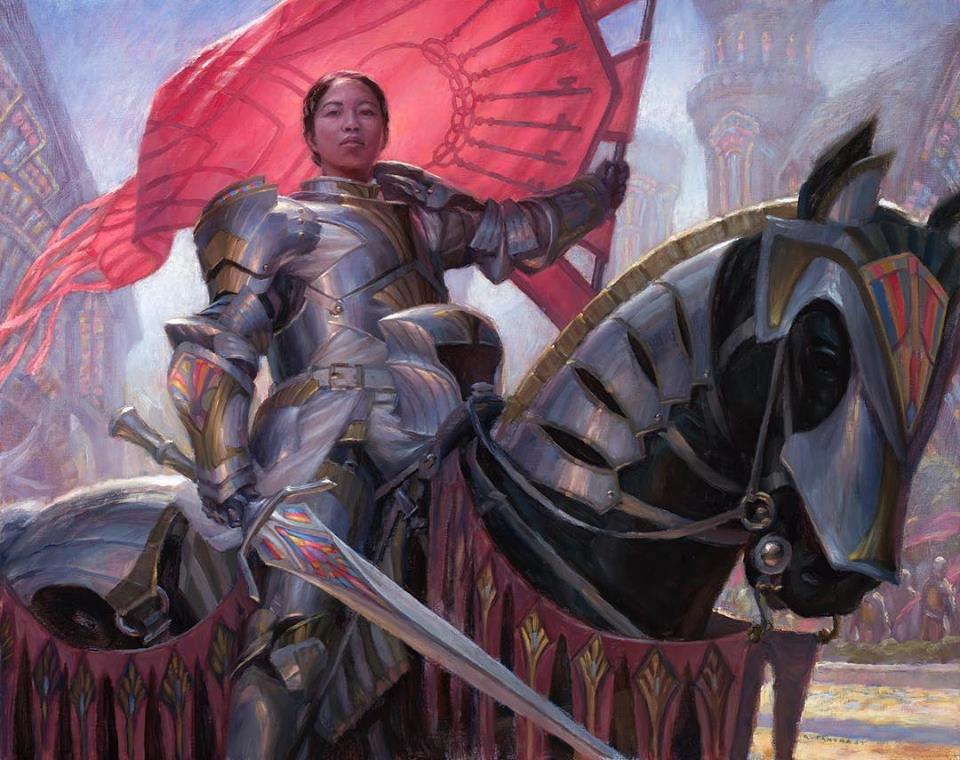
Benalish Honor Guard, oil on canvas, 16” x 20” (Original Sold)
There are a dozen pieces by Ryan I could highlight in this section. I’ve spoken before about how Magic art is slowly making its way into the annual imaginative realism art books and award considerations, being nominated, and winning. If you missed it, check out my break down here (https://www.hipstersofthecoast.com/2018/04/matt-stewarts-gilded-cerodon/) as well as Vorthos Mike Linnemann’s writing on the subject here (http://www.gatheringmagic.com/vorthosmike-news-05102018-magic-nominated-for-chesley-awards/ ) here, (http://www.gatheringmagic.com/mikelinnemann-news-10092017-magic-art-hits-spectrum-24/) and here (http://www.gatheringmagic.com/news-vorthosmike-01232018-magic-in-infected-by-art/). Mike Linnemann writes an article after the announcement of each volume and award, and his articles were used as a reference tool to help compile this list of Ryan’s recent achievements.
In short, these accolades are both juried and extremely competitive, and some even require entry fees to be considered. Magic art was at one point never mentioned or included, but now is not only nominated but winning. Ryan’s work is found across these awards and volumes, and it speaks to just how very good he is at what he does. This is just a snapshot over the last year of his art that has been in Spectrum, Infected by Art, and nominated for a Chesley Award.
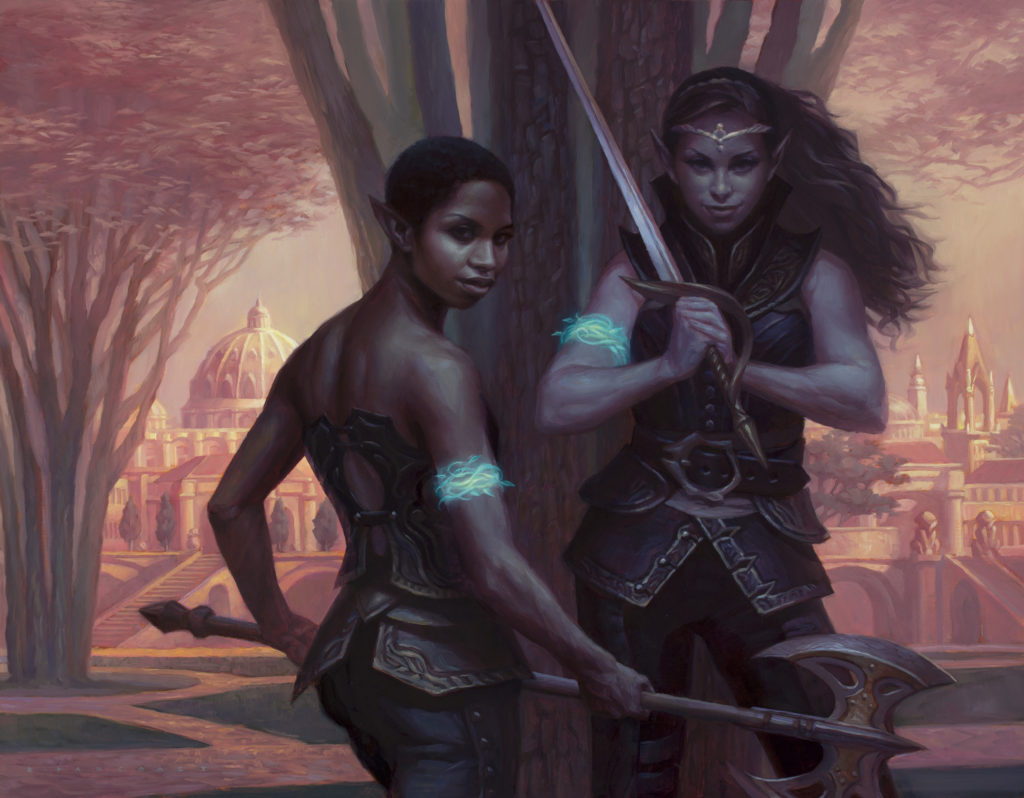
Natural Unity, Spectrum 24, oil on board, 14: x 18”
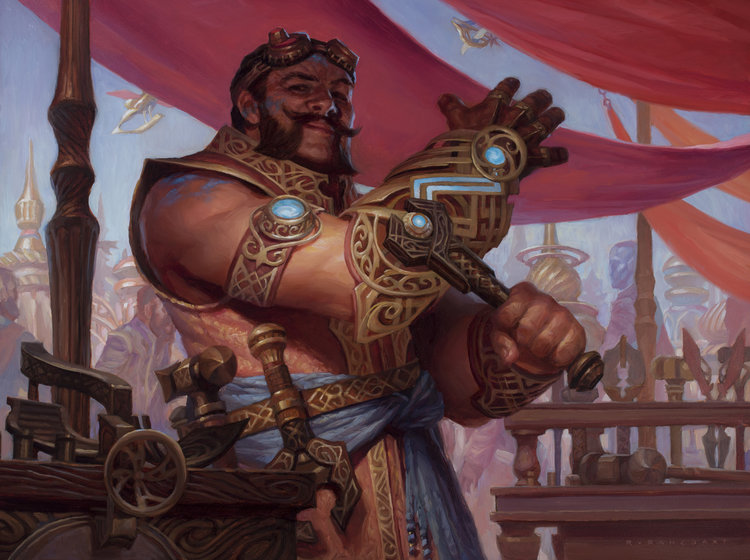
Glint Sleeve Artisan, Spectrum 24, oil on board 12” x 16” (Original Available)
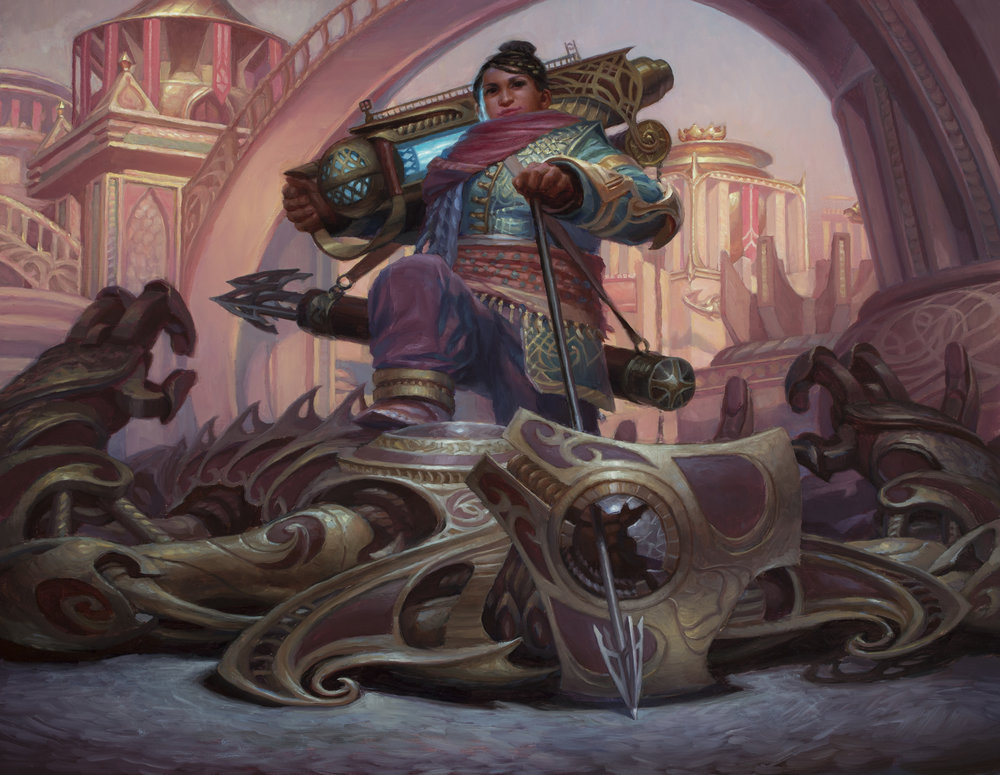
Deadeye Harpooner, Spectrum 25, oil on board 14” x 18” (Original Sold, Alternate Color Studies Available)
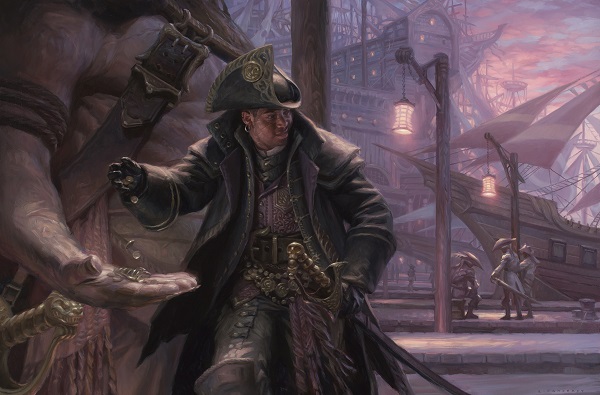
Sailor of Means, Infected by Art 6, oil on board, 20” x 30”
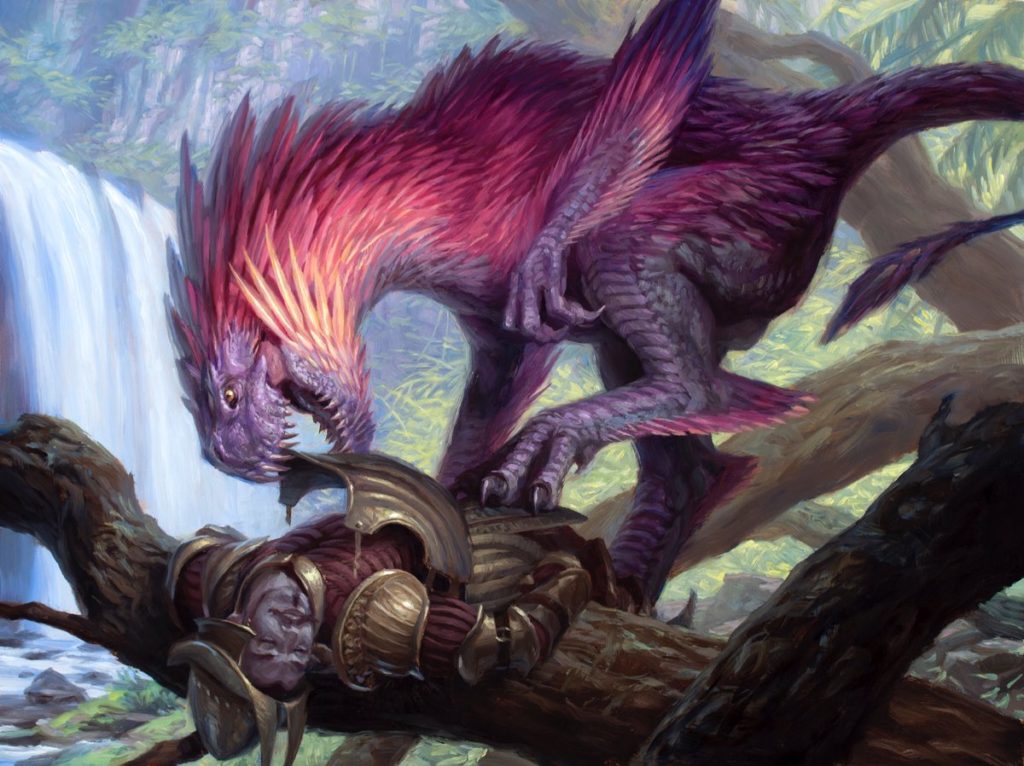
Ripjaw Raptor, Spectrum 25, oil on hardboard, 12” x 16” (Original Sold)
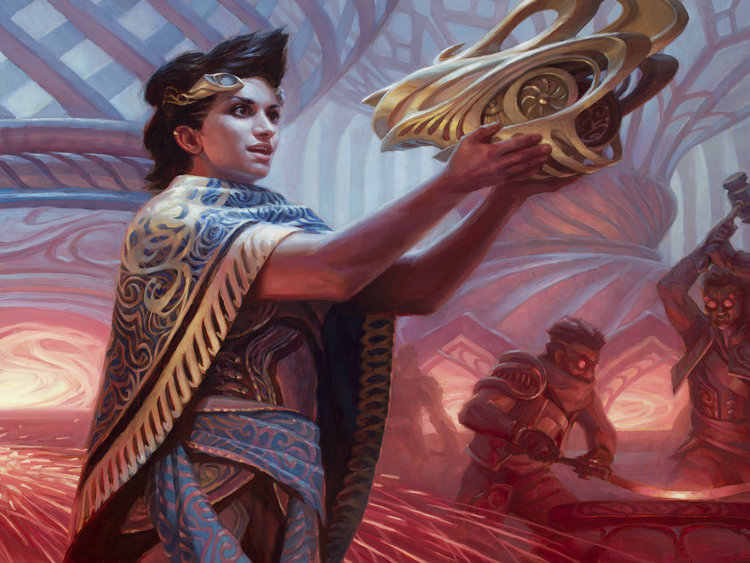
Inventor’s Apprentice, 2017 Chesley Award Nomination, oil on board, 12” x 16” (Original & Color Studies Available)
This is a lot. It’s a huge deal to have work included in these arenas. At this volume, it simply speaks to Ryan’s mastery of and dedication to his craft. I hope you enjoyed a “bigger than card size” look at these paintings; his work is, with no exaggeration, some of the best in the game right now.
Moving forward, there is a TON to explore about Ryan Pancoast’s career, both within and outside of Magic that I simply can’t do in one article. I have acquired a fair few of his Magic pieces, so in future articles I’ll highlight more of the phenomenal illustrations he has done for Magic, in addition to exploring his historical fantasy personal project, Frontier Fantasy and the book Common Ground, his Gumroad tutorials, YouTube time lapse painting videos (check out the one for this pair here), and maybe even his own personal collection of original Magic art. Stay tuned, there are a lot of amazing things coming from Ryan, and so much to talk about.
For more interviews with Ryan Pancoast, check out: A Quick Chat with Ryan Pancoast by Mike Linnemann, and Painitng, Parenthood and Planeswalkers by Pat Scalisi.
Of Lambholt and Lycanthropy
If you have read my other articles, you know a main factor in my decision to acquire a piece of Magic art is a strong locational identity. In other words, I like to be able to see the piece know where it exists in the multiverse. When first looking at these two pieces, we see a provincial home, a deep forest, shaman of some sort. Oh, and also a werewolf. Even for those less familiar with the setting, if there are two similar works and one is a werewolf, welcome to Innistrad.
So we know we are on Innistrad, but what of “Lambholt?” I did not play at all during the first Innistrad block, and only sparingly during the return in Shadows over Innistrad, so my familiarity with the plane is uneven with what I know about other places. Enter The Art of Magic the Gathering: Innistrad by James Wyatt. These books are an incredible resource that delves into the art and lore of Magic well beyond the game and cards, and I opened the pages in hopes of learning more about what I was seeing.
Lambholt, also known as “The Threatened Pasture” is an agrarian settlement in the countryside of Kessig. Werewolves terrorize the countryside, and what was once a festival of the season’s harvest has become a trophy hunt for that which goes bump in the night in the surrounding Ulvenwald forest (Source: Wyatt, p. 133; Planeswalker’s Guide to Innistrad).
Wyatt’s book also has an incredible section on Werewolves as they exist on Innistrad, from their physical and mental traits as both human and canine, to their social groups, called howlpacks, and even going into detail about their relationship to the rise and falls of Avacyn. I’ll leave you with one quote that perfectly encompasses these two pieces:
“A lycanthrope can feel the war of emotions in his or her heart, and as the moon grows full, conscience, religion, and personal restraint wield less and less influence”
– James Wyatt, The Art of Magic the Gathering: Innistrad, p. 84
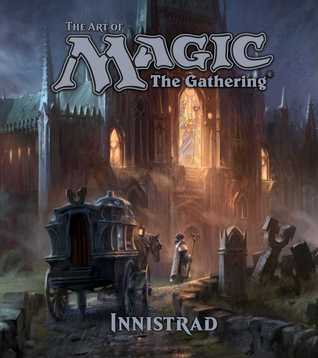
I could write an entire article on Innistrad werewolves, and if that’s something you would like to read, please let me know. But in the meantime, I would encourage anyone who enjoys the setting and flavor of Innistrad to pick up the companion book quoted here, The Art of Magic the Gathering: Innistrad by James Wyatt. I am currently working my way through it, learning new things that you simply can’t observe or absorb at card size during game play.
Artist Insight
Now that we’ve explored Lambholt and a bit about the figures we see, I asked Ryan if there was anything a Magic player might not know about these pieces in particular, as well as his overall work for Innistrad. He painted a total of 18 illustrations between both set blocks, including several double-faced cards, giving his work a decided presence within the set. These two-sided cards make the Innistrad plane unique and were one of the things that initially drew me to these two pieces. Unlike some of the other double-faced cards we’ve seen recently, the theme here is a subject is depicted during their “Day” form and then their transformative “Night” form; very fitting for this plane.
RP: I like double-sided cards because of the story they tell and the little details you can weave between the two pieces.
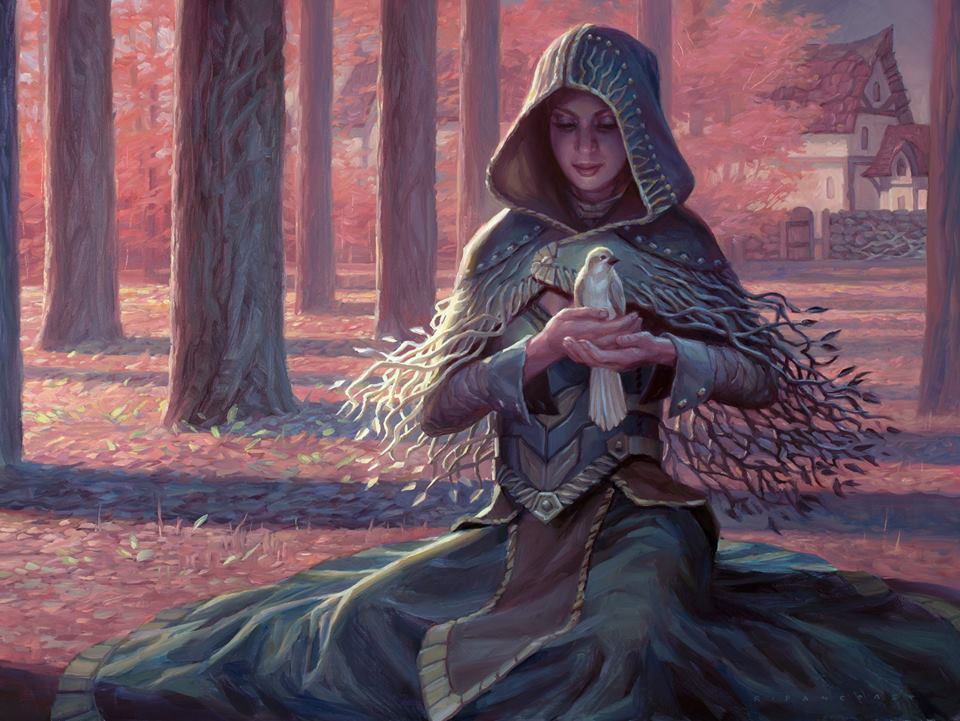
Let’s look at some of the continuity between these two pieces, as these are the details that really tell a story. A human, robed with cape of twigs in a serene, autumnal forest holding a beautiful white bird. Until night falls.
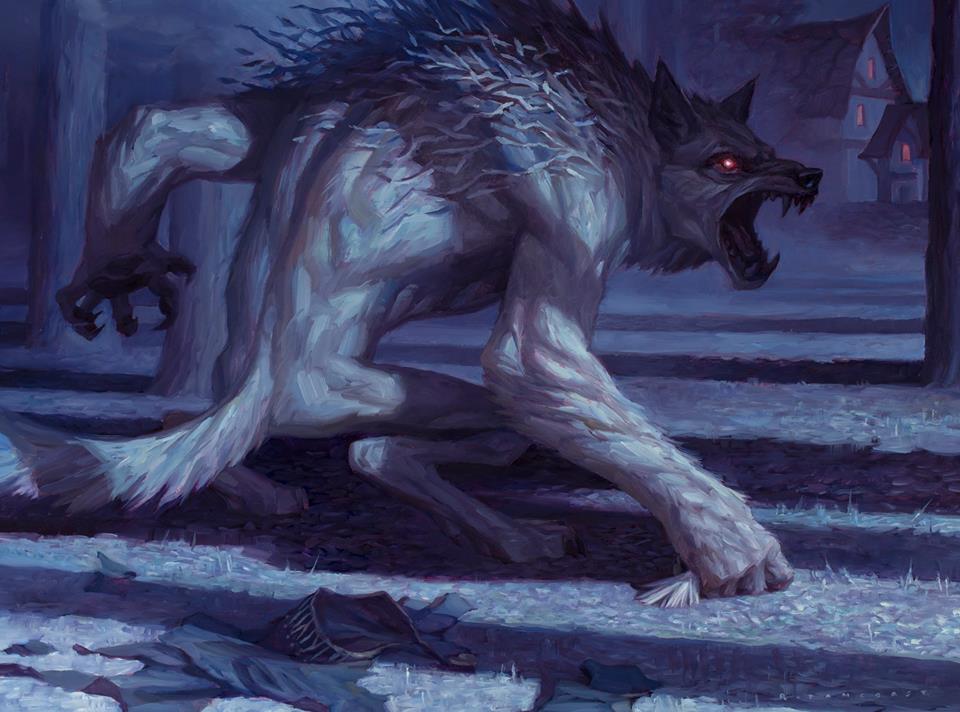
A hulking werewolf stands in the forest. It’s the same spot in the same forest as the Pacifist; note the house on the far right that now is candlelit. Her robe is in tatters in the foreground. The twig cape still exists, but now appears more as nightmarish boughs than anything else. These are undoubtedly the same person in the same place, the only difference created by the presence of the moon. The Pacifist has lost.
RP: The sad fate of the white bird was my idea; it was not included in the original prompt.
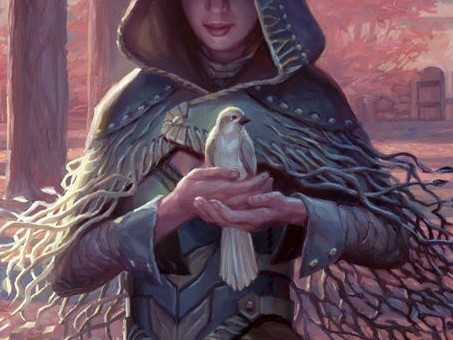
I mentioned the white bird when describing the Pacifist. It is front and center, a metaphor for the current inner peace of the human being depicted, the same inner peace constantly at war with the primal instincts of the other soul inside the Pacifist. I did not, however, remember the bird once she transformed into the Werewolf-form Butcher. Time for a closer look.
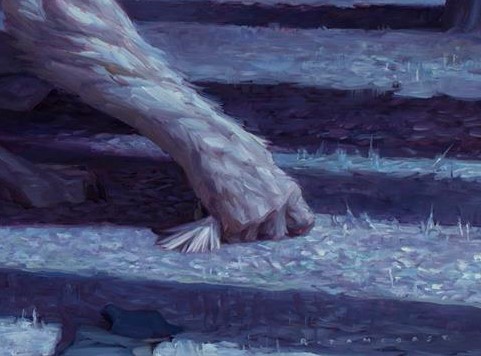
Well, we found it. There is a “bird in the hand” joke in here somewhere, but I’ll spare you all, this time anyway. This is full circle storytelling; the subject has changed completely both physically and mentally to the point of blind murderous indifference. The white bird and the calm it symbolizes is no more, just as the shaman as she once knew herself is no more.
Why This Piece?
Rather than work through each of my five questions individually of why I collected a work, I’m going to highlight one or two key factors. You will soon find out I have an affinity for color studies, so we can safely assume if I acquire one, I love it. They are beautifully complex, refined yet incomplete, and totally unique. But in addition, two other major factors drew me to these two works:
The Artist
Pancoast is an ace artist, and if we are lucky will continue to illustrate Magic cards for a long, long time. No matter his commission, the art directors know he will put in the time and effort to knock it out of the park. Spectrum/IBA inclusion and Chesley nominations are not a fluke, and there will be more masterpieces by Ryan in the future.
Set Environment
Innistrad is one of Magic’s most loved planes, and the favorite location in all the multiverse for many players. The day/night flip-card flavor situates this piece firmly as pure-Innistrad, and at the time of acquisition was the only piece I owned that was located on the plane. The two pieces are a narrative in and of themselves, and that makes them special.
Put it on the Wall!
These color studies are small at only 5 inches by 7 inches, which means custom framing can and should be very budget friendly compared to a larger work. You all probably already guessed it, but I headed over to my local custom framing gurus at Ain’t That a Frame to see what we could do.
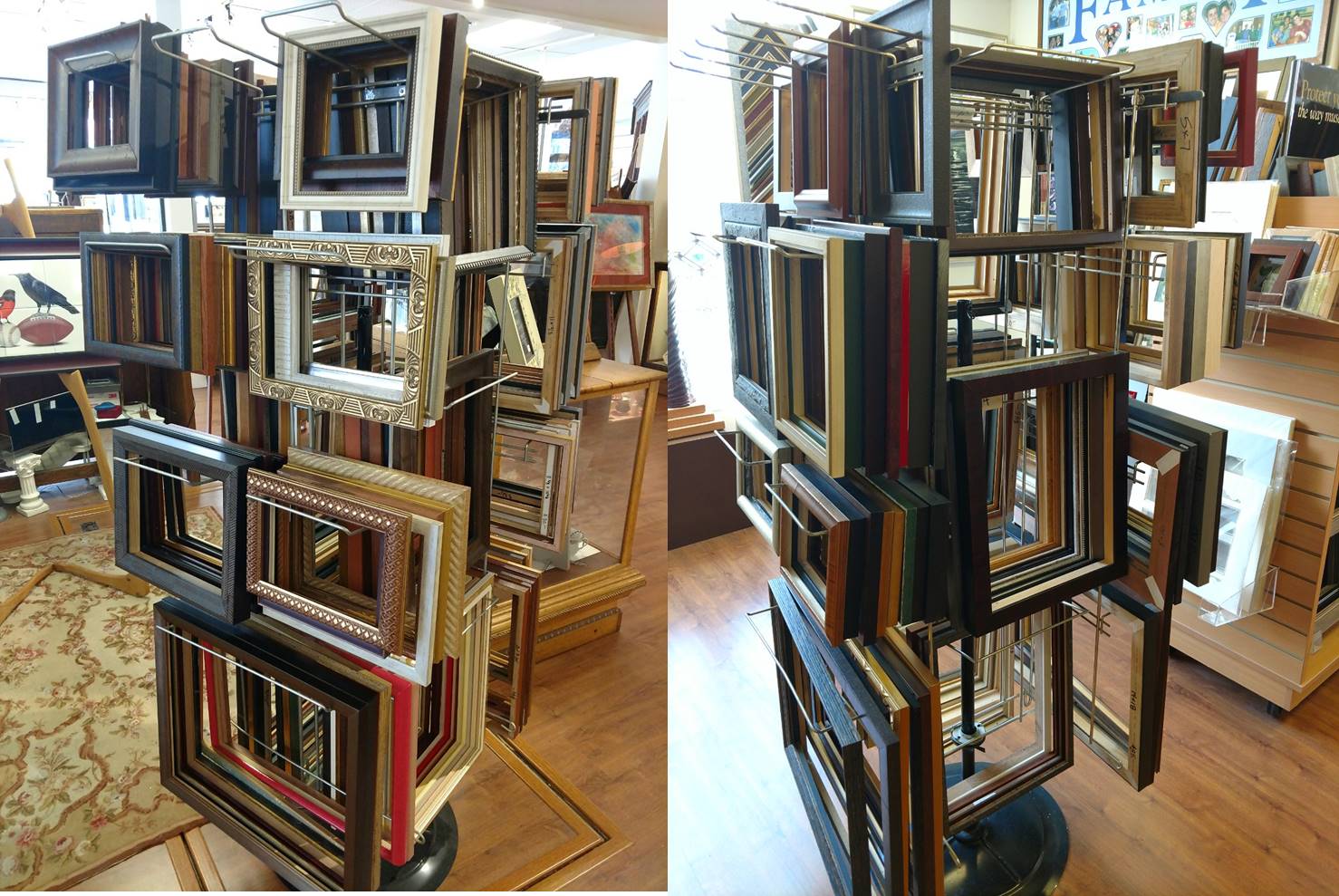
This pair of color studies were framed at the same time as Gilded Cerodon, and while my framer Lou was writing up the paperwork, I got these out and put them up on the table. When she saw the size, she suggested I look on the racks behind me at the “ready-mades,” frames she made from extra lengths of frame material ordered for a custom job. She explained that many times she will need, say, 11 feet of a molding, but has to order two 10 foot sticks in order to get what she needs. The rest is used to make as large of a frame as possible to prevent the extra stock from getting damaged. It is then sold at a discount as a “ready-made.”
I already knew that I wanted an inverse framing suite on this pair. After all, it is a flip card that goes from daylight to moonlight, so if I could find the same frame but in a light color and then a dark or monochromatic color, there would be no better way to compliment these two pieces. No sooner than she pointed behind me, and hanging right there on the ready-made shelf, was a pair of the same frame, one in natural wood and one identical, but in black. They were from the Taichang Collection by Larson-Juhl, a series of frames that are a contemporary take on Eastern bamboo style-frames.
Perfect, right? Not quite.
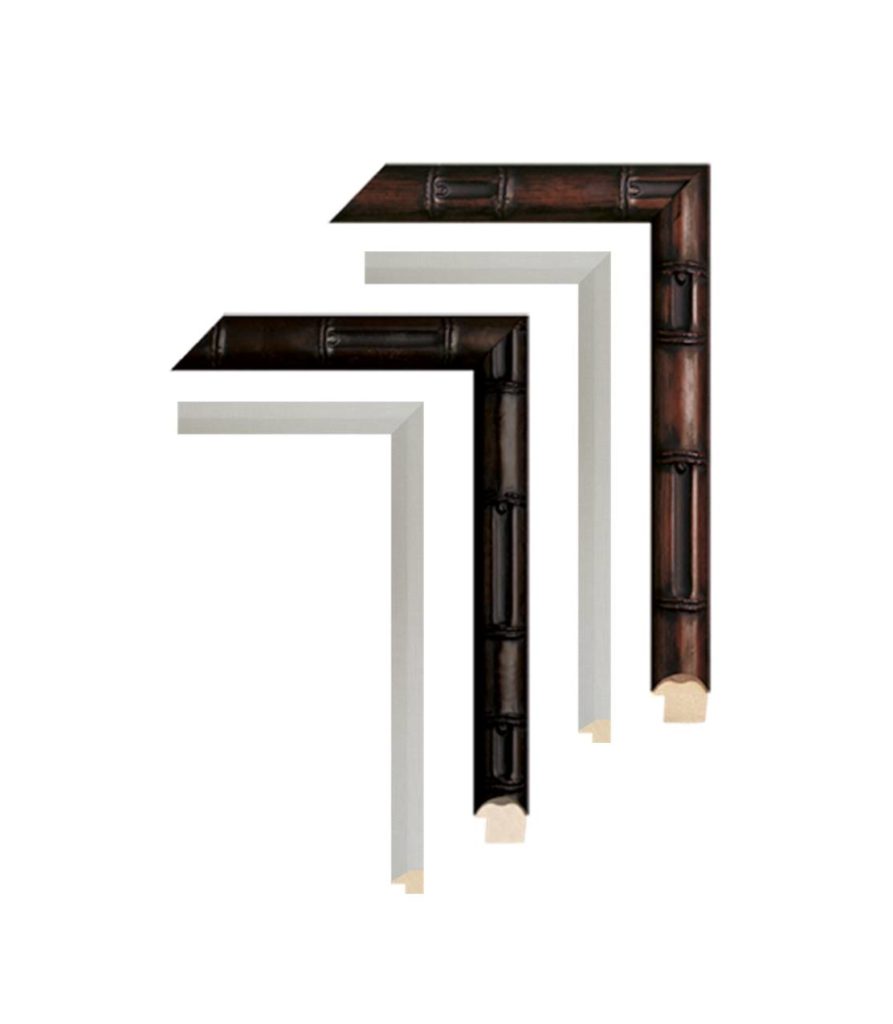
This perfect pair of frames was 6 inches by 8 inches, and generally these ready-mades don’t get customized because they were already cut and assembled once. Enter the Darien liner, also by Larson-Juhl, again at the suggestion of my framer. She could have abandoned ship and tried to direct me back to a full custom frame, but she was just as excited about the match as I was.
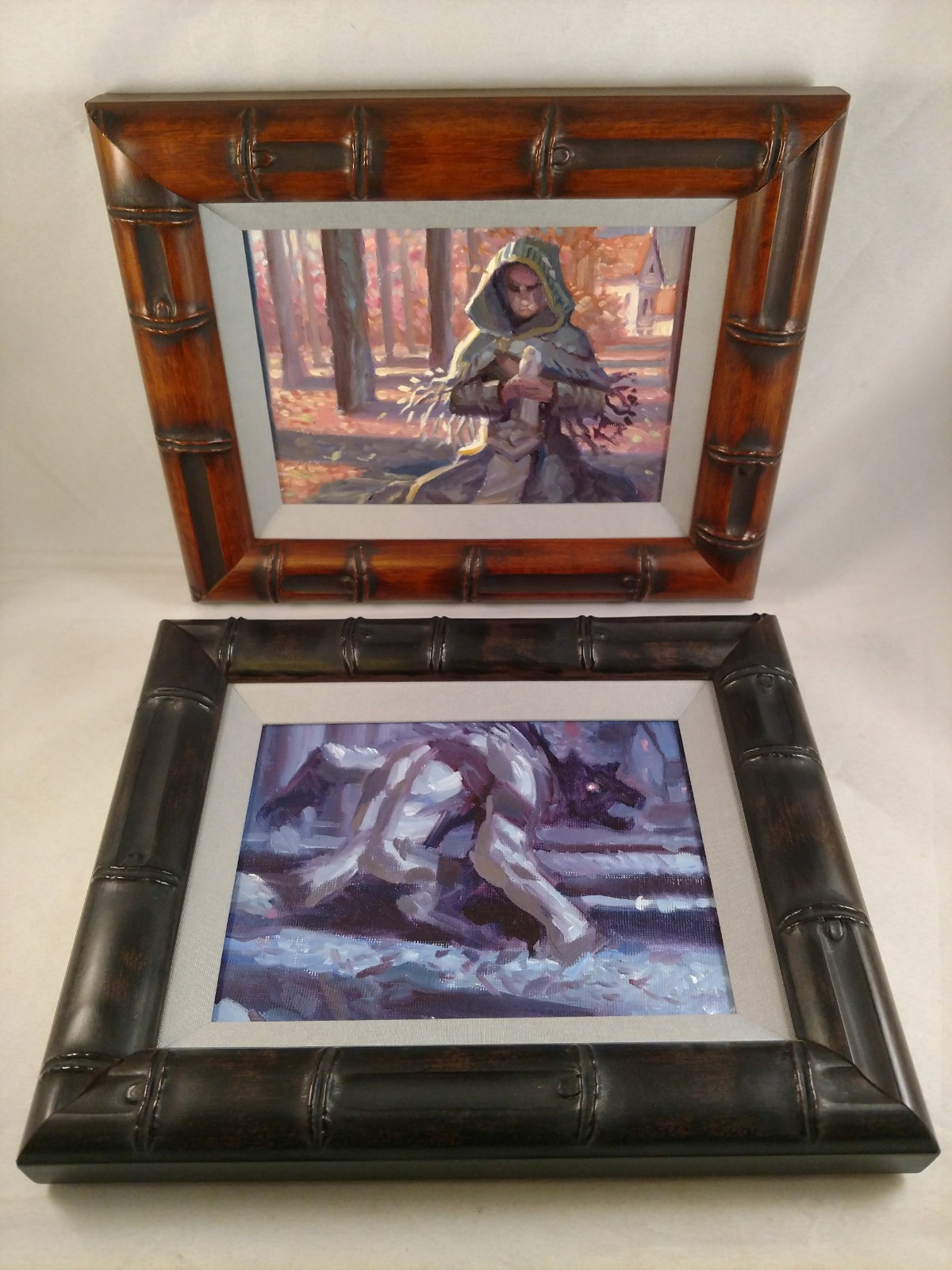
This was the first foray of what will be many in framing my collection of color studies. I have a fantastic opportunity to get top quality frames at budget friendly prices so long as I’m patient, and if the rest of my framing trips are half a successful as this one my collection will be in good shape. Again, I can’t recommend enough building a solid relationship with a custom framer, whether it’s to frame a single piece or an entire collection.
Build Your Collection
Ryan still has a half dozen original pieces of Magic art available for purchase, along with a few color studies as well. To see everything that is still available from the artist, check out his store here. I’ve only included those pieces I mentioned in the article to save some for future articles, but make sure you click through to see everything he still has!
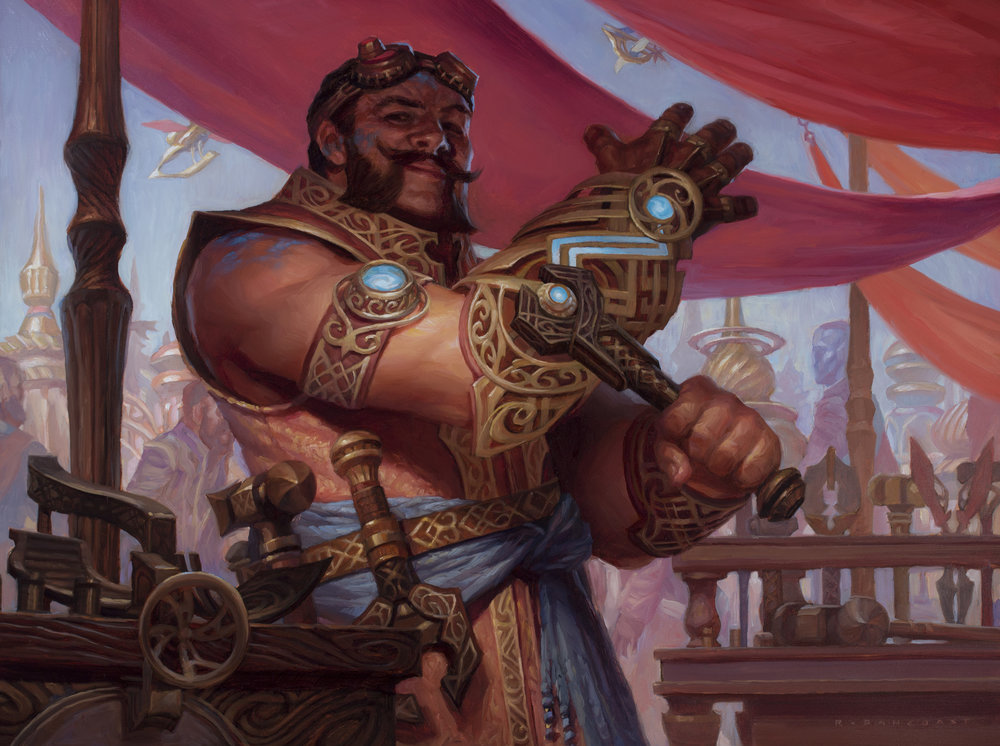
Glint Sleeve Artisan, oil on board, 12” x 16” $2000

Inventor’s Apprentice, oil on board, 12” x 16”, $3000
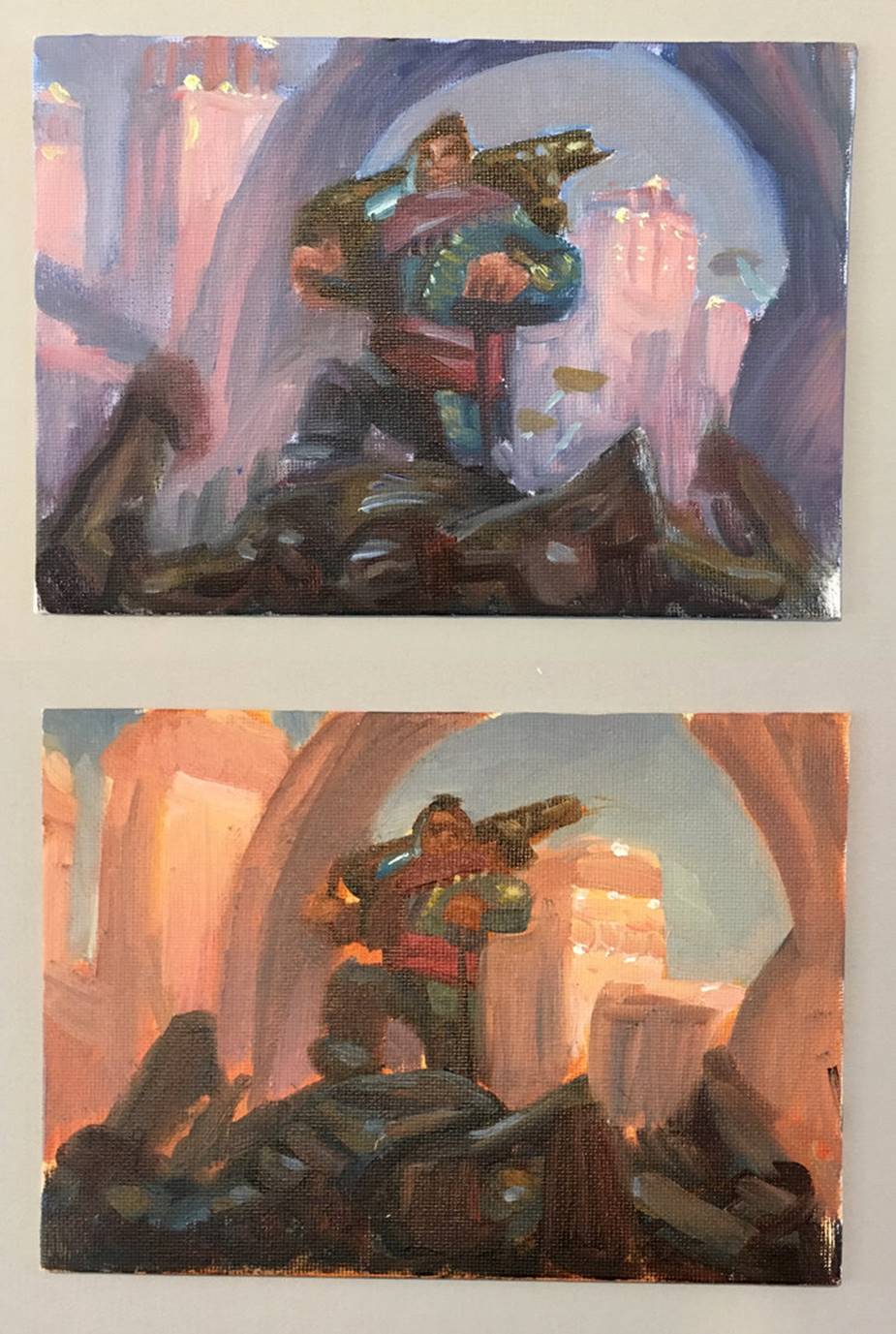
Deadeye Harpooner Color Study B & Study C, 5” x 7”, oil on canvas board, $80/each
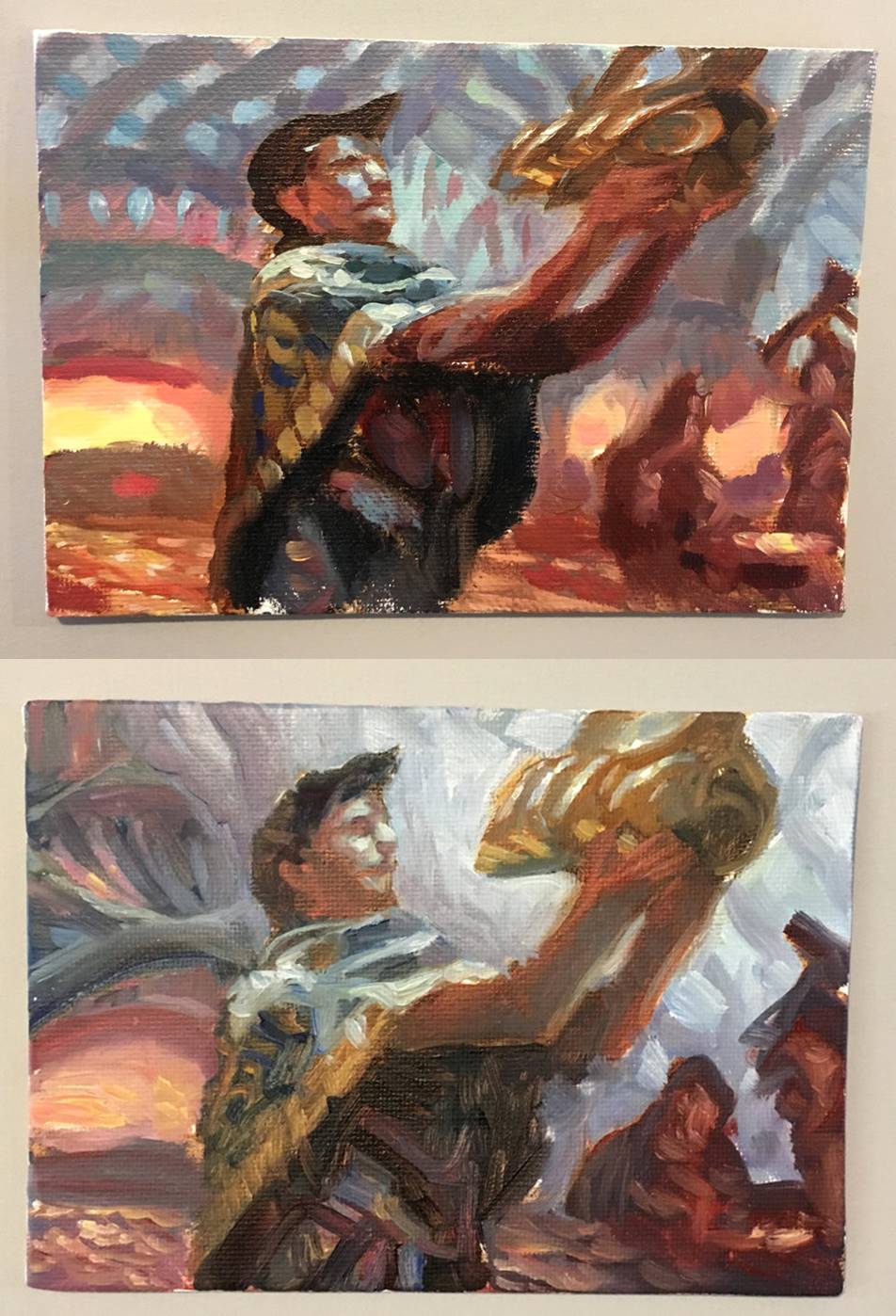
Inventor’s Apprentice Color Study A & Study B, 5” x 7”, oil on canvas board, $80/eac
Wrapping Up
I really hope you enjoyed this deep dive into these two pieces, as well as Ryan Pancoast’s career as an artist and illustrator for Magic. There will be much more to see from this artist, so keep an eye out in future articles for more pieces of his work. Next time we will be taking a look at something from Dominaria, which was an incredibly busy time for original Magic art collectors of all levels. It’s a special piece, and I think you will all enjoy a closer look, so stay tuned.
Donny Caltrider has been playing Magic since 2002 and collecting original Magic art since 2017. He has an M.A. in Museum Studies from Johns Hopkins University and enjoys telling stories about art, objects, and the intersection of fantasy with real-life. You can find him on Twitter talking about #mtgart, museums, and other #vorthos related goodness. Follow along and continue the conversation!

